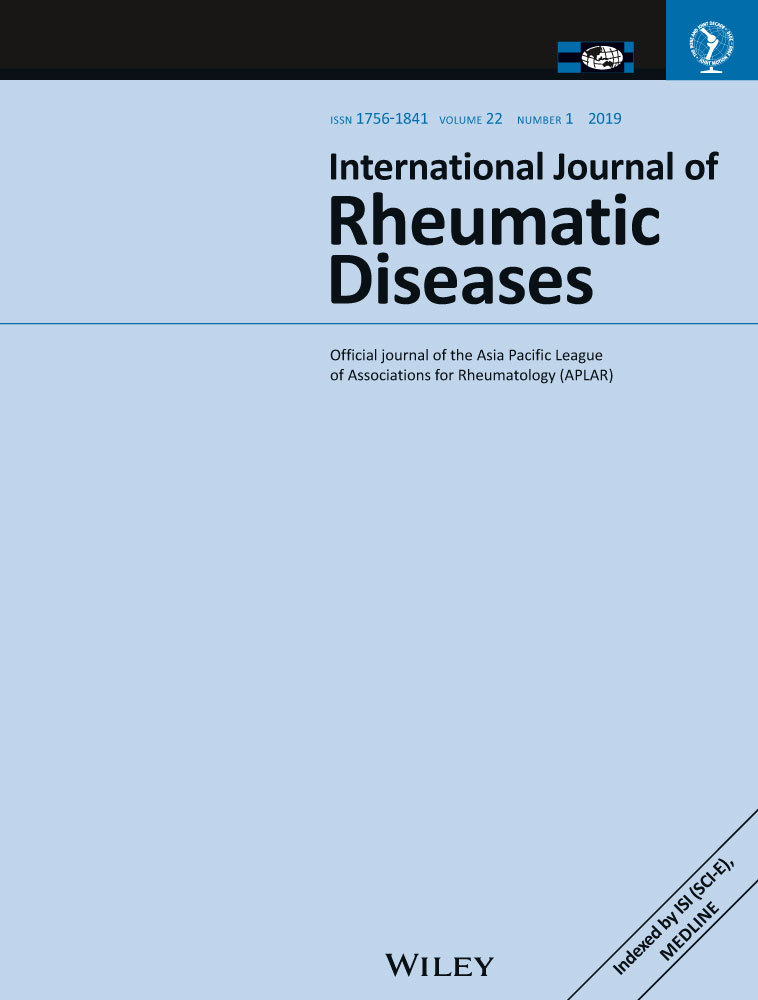Clinical utility of red blood cell distribution width in inflammatory and non-inflammatory joint diseases
Abstract
Aim
Current studies demonstrate red blood cell distribution width (RDW) as a possible surrogate biomarker of inflammation. The objectives of the present study were to examine RDW in patients with osteoarthritis (OA), fibromyalgia (FM), rheumatoid arthritis (RA) and spondyloarthritis (SpA) and to evaluate its clinical importance.
Methods
Six hundred and ninety-nine ambulatory patients were evaluated. RDW, hemoglobin, erythrocyte sedimentation rate (ESR) and C-reactive protein (CRP) were assessed. In order to compare groups, a Kruskall–Wallis test with post hoc Dunn's test was applied. A multiple logistic regression analysis was used to evaluate anisocytosis explanatory variables.
Results
Red blood cell distribution width values differed significantly among groups. Post hoc analysis demonstrated a significant increase in RDW within RA versus OA groups (P < 0.001), active SpA versus OA (P < 0.001), RA versus FM (P < 0.001) and active SpA versus FM groups (P = 0.001). Presence of anisocytosis was useful to discriminate between active articular inflammatory versus non-inflammatory diseases with 48–95% sensitivity and 66–95% specificity. Multivariate analysis showed a six-fold increase in anisocytosis for the presence of a possible articular inflammatory disease.
Conclusion
In subjects with articular pain, RDW interpretation is a useful tool in clinical practice to distinguish between articular inflammatory and non-inflammatory joint diseases, as with CRP. RDW seems to be a surrogate marker of the inflammatory process.
Conflicts of interest
The authors declare that there is no conflict of interest regarding the publication of his paper.




